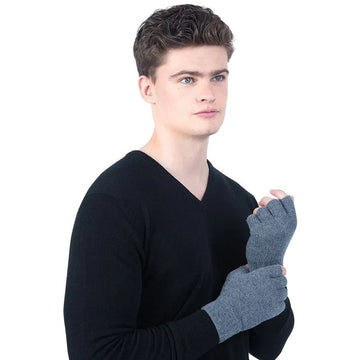There are few sensations that feel better than putting on a piece of high-quality cashmere clothing, and enjoying the light, smooth softness as it keeps you warm as winter turns to spring.
A lot of people love cashmere, and a lot of manufacturers have realised the appeal themselves and started to produce cashmere lines for themselves.
However, when buying cashmere from a seller you are not familiar with, or one you know but are not associated with the material, the golden rule of “caveat emptor” (buyer beware) comes to mind, and it is important to be wary and know how to spot the best of the best.
Whilst it can be very difficult without an electron microscope to know for certain that cashmere bought from an unknown source is high quality and as described, there are some effective tests you can do to know with relative certainty whether the item you have bought is high-quality cashmere or not.
Check The Label
Whilst this can seem like quite an obvious test, and indeed it is, taking advantage of a legal requirement for the percentages of different fibres to be disclosed on the label is a great place to start.
Naturally, you want to see the label show as high a percentage of cashmere as possible, with 100 per cent being ideal, particularly for garments that are quite expensive.
Naturally, if there is no label at all or no percentages, that is a gigantic red flag that you should avoid. Even if it is cheap, that is because it is not real cashmere.
The Burn Test
This is not a test that you should necessarily try unless you absolutely must know, and you must do this test near a sink with running water with an open window nearby, for reasons that will quickly become obvious.
Take a small number of fibres (probably best done from the ends of a scarf to avoid causing damage to your garment, wrap them around a fireproof metal wire and hold them up to a naked flame, taking note of the smoke from the burning threads before quickly cooling it in the water.
Animal fibres will have an aroma like burning hair, will burn very quickly (hence why you need the water) and will leave a black crumbly residue that looks and feels (once it’s cooled down) like charcoal.
If it is an oil-based alternative like polyester, it will burn with a cloud of black smoke and leave behind a hard plastic black ball.
Warm To The Touch
Typically, one of the best and most instinctive ways to tell if the cashmere in your hands is high quality is to stroke it. This will tell you several important facts.
The first is that it should feel soft and comfy to the touch as opposed to cold, scratchy or overly slippery.
As well as this, you want to feel a tightly woven pattern, as that typically means that more cashmere fabric was used and thus the result will be more comfortable, luxurious and valuable.














